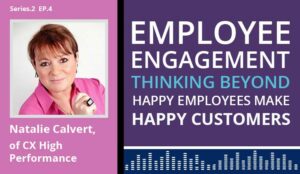Remote and hybrid work are here to stay, but they present new challenges for organizational leadership. How do you foster productivity and keep employees happy in this new normal?
It’s useful to start with an understanding of why employees overwhelmingly prefer remote work. In a recent survey, remote workers say they value: flexible schedules (32%), the ability to work from anywhere (25%), the lack of a commute (22%) and more time with family (11%).
And yet, they also have concerns. Two-thirds of employees worry they’ll miss out on career opportunities if they continue working remotely, McKinsey research shows, while almost half (49%) say they feel burned-out after the pandemic.
Leaders can use these desires and concerns as starting points for reimagining the workplace and company culture. Cultivating a happy and highly productive workforce will require both new policies and a new approach to management.
Here are three tips to help you get it right.
Flexibility: A Workforce Advantage
In the war for talent, companies that are flexible about where and when employees work will gain an advantage.
Thirty-nine percent of employees say they would consider quitting their jobs if employers didn’t offer flexibility, and the percentage was even higher―at 49%―among Millennial and Gen Z workers.
This doesn’t necessarily mean an end to the 9-to-5 paradigm altogether.
In fact, 68% of employees who worked remotely during the pandemic say they favor returning to a hybrid workplace, compared to 26% who say they prefer permanent remote work.
Instead, flexible work conditions and giving employees more control over when and where they work can make organizations more attractive to workers.
Options such as flexible hours, no-meeting days and training resources that focus on improving communications skills in digital media are likely to be viewed positively by potential job candidates.
However, to make such changes stick, managers will need to instill new company values and let go of long-held attitudes that performance and advancement are contingent on being in the office.
Emotional Intelligence: Be Attuned To Stress Points
In America and Canada, 57% of workers reported higher stress levels in 2020 than their colleagues in Western Europe, where stress actually declined. Yet other research shows one-third of professionals say their overall performance and quality of work improved.
Indeed, employees reported having more time to focus on professional growth by reading more (35%), taking online courses (34%) and continuing their education (29%).
Managers should lean into what worked. Providing opportunities for growth and learning have been known to improve performance. But the leaders of tomorrow will also need to be attuned to the causes of stress, anxiety and burn-out.
Leaders with high emotional intelligence will be quick to identify when an employee is showing signs of distress. They can take steps to alleviate stressors or improve the situation.
For instance, they can lend an empathetic ear to a troubled employee. Other steps, like setting rules so that everyone has a chance to talk in team meetings or establishing “no video” days to reduce fatigue can also improve employee happiness.
IT can play a role too by ensuring the right communications and collaboration tools are in place so everyone is on the same page and no one feels left behind or out of the loop.
Collaboration: Rethink The Workday
The hybrid workforce will be comprised of several types of employees. The fully remote worker is one who rarely or perhaps never comes into the office.
At the opposite end of the spectrum is the 100% in-the-office employee. Then there’s the hybrid worker, who follows a 3-2-2 schedule: three days in the office, two days remote and two days off. Other models are also likely to emerge.
Some employees may spend three consecutive weeks working remotely and only week in the office for the last week of every month.
This diversity of schedules has the potential to make it very difficult for managers to foster higher productivity. Cohesiveness is a vital element of a high-performing team.
But when members are rarely together in the same room, this quality may feel elusive. Managers may be tempted to turn to a traditional solution: the team meeting.
Meetings can be productive and help achieve cohesion, but they can also have the opposite effect. During the pandemic, employees faced schedules of back-to-back meetings, contributing to both fatigue and stress.
It’s tiring to be on-camera for several hours at a time, and overscheduling often doesn’t leave enough time for actual work to get done.
That’s why managers need to rethink the workday. Gartner suggests rebalancing the workload between synchronous (working together) and asynchronous (working alone) approaches. The analyst firm points out there has been overreliance on synchronous modes, leading to a negative effect on health.
Although companies have invested in virtual technologies during the pandemic, there’s clearly room for improvement.
When it comes to policies that will improve productivity and employee well-being, 34% of employees ranked setting clear hours for collaboration and when to be online as the top policy, according to McKinsey’s findings.
At number two was “robust standardized and integrated virtual collaboration tools,” according to 29% of employees.
Shared workspaces and the ability to seamlessly switch between video, voice and chat, for example, make it easy for employees to work with teammates or plug away at a solo task while still having access to project notes and other pertinent information.
Leaders and managers may be facing significant workplace change, but these tips can help them navigate a more complicated environment and even gain a competitive edge in attracting high-performing talent to their organization.
Author: Guest Author
Published On: 6th Jul 2021
Read more about - Guest Blogs, Mitel





































